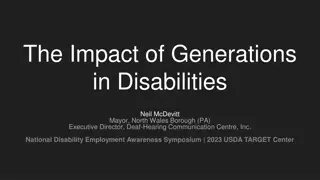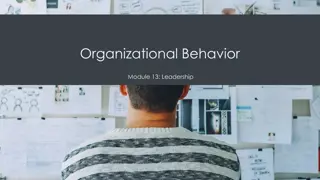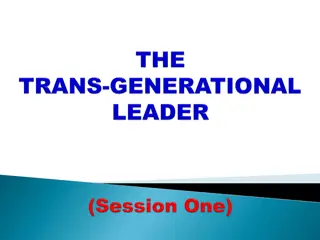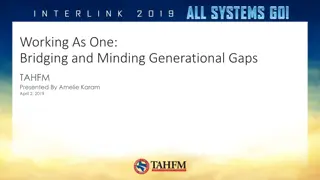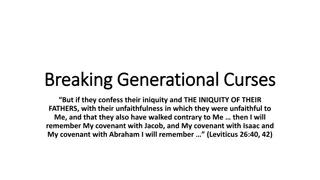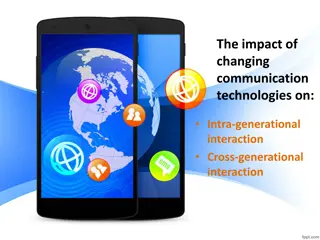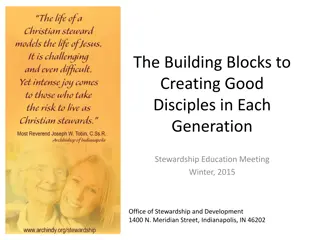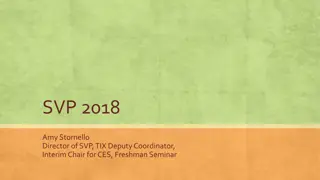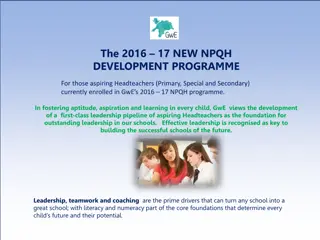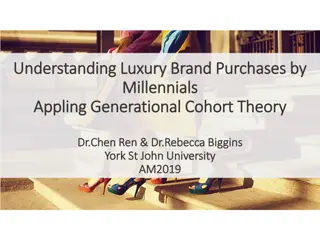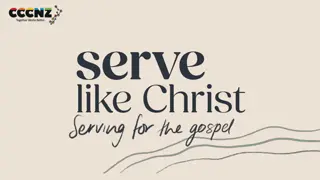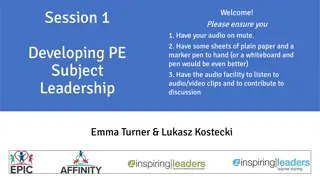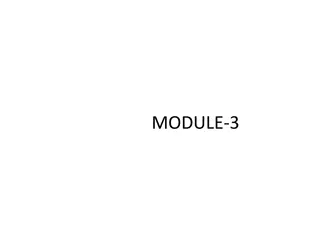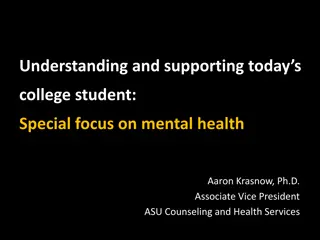Understanding Group Development and Generational Components in Leadership
Explore the stages of group development and generational components in leadership within the US Coast Guard Auxiliary. Learn about group dynamics, common goals, and the different work constructs of various generational cohorts. Discover valuable insights on leading others, team building, and fostering effective collaboration.
Download Presentation

Please find below an Image/Link to download the presentation.
The content on the website is provided AS IS for your information and personal use only. It may not be sold, licensed, or shared on other websites without obtaining consent from the author. Download presentation by click this link. If you encounter any issues during the download, it is possible that the publisher has removed the file from their server.
E N D
Presentation Transcript
Auxiliary Deck Plate Leadership Series Group Development USCG Leadership Competency: Leading Others: Team Building Learning Outcomes: Describe the five states of group development Assess what stage the flotilla or division is at A group is defined as a collection of two or more interacting individuals with a stable pattern of relationships who share common goals and who perceive themselves as being a group. 1 USCG Auxiliary Deck Plate Leadership Series Reviewed, DIR-T USCGAUX
Definitions A group is two or more interacting individuals with a stable pattern of relationship who share common goals and who perceive themselves as being a group. Ex. Flotilla or Division Formal groups are defined by organizational structure: Command groups or Task groups (boat crew) Informal groups are groups that form to respond to common interests or social interaction: Interest groups or Friendship groups 2 USCG Auxiliary Leadership Deck Plate Series Reviewed, DIR-T USCGAUX
Generational Components Generational Components: Values Work Construct Motivators & Rewards Work construct determines what internal and external motivations inspire me. These drive people to accomplish, excel and perform. Recruiting & Retention Leading different generations, requires that we know them and fulfill their needs as members of the organization. By 21 years of age, the worldview is set and determines values development. Our role models help define our work construct. What will I chose to do to place food on my family s table Workplace Groups or Cohorts Born Recognize past contributions, provide flexibility in pace of activity; involve in decision making; help to learn new methods. They are critical to our success. The greater good; connecting work with the benefit to the organization; tangible symbols of loyalty and commitment. 4 F's: faith, family, friends and freedom. Patriotic; duty before pleasure. Veterans 1920-1940 Work = Duty Emphasize their value to the organization; recognize their efforts; provide PERKS, they prefer the hierarchy; need to see steps to a defined goal; help to balance the responsibility of the sandwich generation. Social Their value to the organization: personal appreciation, promotion, recognition, status symbols, such as a corner Office, Title, Privileges, MONEY consciousness: civil rights, women s rights, Brown vs. Board of Education, cold war, and environmental pollution Boomers 1940-1960 Work = Worth USCG Auxiliary Leadership Deck Plate Series 3 Reviewed, DIR-T USCGAUX
Generational Components Continued Generational Components: Values Work Construct Motivators & Rewards Work construct determines what internal and external motivations inspire me. These drive people to accomplish, excel and perform. Recruiting & Retention Leading different generations, requires that we know them and fulfill their needs as members of the organization. By 21 years of age, the worldview is set and determines values development. Our role models help define our work construct. What will I chose to do to place food on my family s table Workplace Groups or Cohorts Born Tell them what needs to be done and manage by results; Provide freedom and flexibility; accept their straight forwardness; Provide continuous learning and promote technology. Self Reliance, Informality, Technoliteracy, balance between work and self (family); global thinking, Fun Job Flexibility , Sense of fun, Autonomy, Immediate gratification, challenging work, opportunity to learn. Work = Expand skills = Better Resume Gen Xers 1960-1980 Respect their contributions and skills; Provide clear expectations and goals; Establish a mentor program; they respond well to team work, a fun environment and will engage in work that has meaning. Family, Friends, Technology, Mentors, Team Oriented, Achievement, Diversity Veteran Can-do + Boomer Teamwork + GenX Techno-Savvy = Millennial Connect action to goals, work must have meaning, tangible rewards. Millennial 1980-2000 USCG Auxiliary Leadership Deck Plate Series 4 Reviewed, DIR-T USCGAUX
Why do people join volunteer organizations? Security Status Self-esteem Power Goal achievement Cultural identity Photo retrieved from http://www.cgaux.org/ 5 USCG Auxiliary Leadership Deck Plate Series Reviewed, DIR-T USCGAUX
Group Development Stages Forming caution, confusion, uncertainty. Storming tension, hostility, and intragroup conflict. Norming group norms and developing of close relationships. Performing - focusing on the accomplishment of the task. Adjourning getting closure. 6 USCG Auxiliary Leadership Deck Plate Series Reviewed, DIR-T USCGAUX
Forming High dependence on Flotilla Commander for guidance and direction. Little agreement on Flotilla aims other than received from leader. Member roles and responsibilities are unclear. Leader must be prepared to answer lots of questions about the Flotillas purpose, objectives and external relationships. Leader directs. 7 USCG Auxiliary Deck Plate Leadership Series Reviewed, DIR-T USCGAUX
Storming Decisions don't come easily within Flotilla. Members vie for position as they attempt to establish themselves in relation to other members and the leader, who might receive challenges from members. There is some clarity of purpose but plenty of uncertainties persist. Cliques and factions have formed and there may be power struggles. Leader coaches. USCG Auxiliary Deck Plate Leadership Series 8 Reviewed, DIR-T USCGAUX
Norming The Flotilla is more strategically aware; the members know clearly why they are doing what they are doing. The members have a shared vision and is able to stand on its own feet. There is a focus on over-achieving. Disagreements occur but now they are resolved within the Flotilla positively, and necessary changes to processes and structure are made by the members. The members are able to work towards achieving the goal, and also to attend to relationship, style and process issues along the way. Members look after each other. The Flotilla receives delegated tasks and projects from the leader. Members might ask for assistance from the leader with personal and interpersonal development. Leader delegates and oversees. USCG Auxiliary Deck Plate Leadership Series Reviewed, DIR-T USCGAUX 9
Performing Agreement and consensus largely forms among the members, who respond well to facilitation by leader. Roles and responsibilities are clear and accepted. Big decisions are made by member agreement. Smaller decisions may be delegated to individuals or small teams within Flotilla. Commitment and unity is strong. The Flotilla may engage in fun and social activities. There is general respect for the leader and some of leadership is more shared by the members. Leader facilitates and enables. USCG Auxiliary Deck Plate Leadership Series 10 Reviewed, DIR-T USCGAUX
Assessing Flotilla stage Stage changes with group membership Stage changes during times of high stress Stage changes with tasks/topics Can also be used with individuals USCG Auxiliary Leadership Deck Plate Series 11 Reviewed, DIR-T USCGAUX



